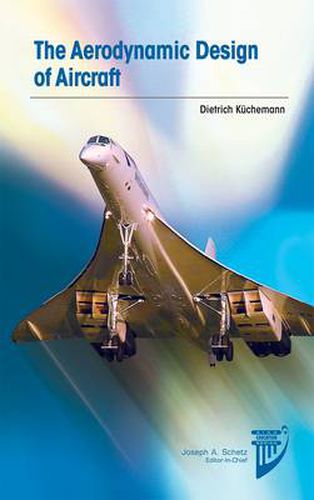Readings Newsletter
Become a Readings Member to make your shopping experience even easier.
Sign in or sign up for free!
You’re not far away from qualifying for FREE standard shipping within Australia
You’ve qualified for FREE standard shipping within Australia
The cart is loading…






Dietrich Kuchemann’s The Aerodynamic Design of Aircraft is as relevant and as forward looking today as it was when it was first published in 1978. It comprises the philosophy and life’s work of a unique and visionary intellect. Based upon material taught in a course at Imperial College London, the insight and intuition conveyed by this text are timeless. With its republication, Kuchemann’s influence will extend to the next generation of aerospace industry students and practitioners and the vehicles they will produce. Kuchemann establishes three classes of aircraft based on the character of flow involved. Each class is suitable for a distinct cruise speed regime: classical and swept aircraft for subsonic and transonic cruise, slender-wing aircraft for supersonic cruise, and wave-rider aircraft for hypersonic cruise. Unlike most engineering texts, which focus on a set of tools, Kuchemann’s approach is to focus on the problem and its solution - what kind of flow is best for a given class of aircraft and how to achieve it.With this approach, Kuchemann fully embraces the true inverse nature of design; rather than answer
what flow given the shape,
he strives to answer
what flow given the purpose
and then
what shape given the flow.
$9.00 standard shipping within Australia
FREE standard shipping within Australia for orders over $100.00
Express & International shipping calculated at checkout
Dietrich Kuchemann’s The Aerodynamic Design of Aircraft is as relevant and as forward looking today as it was when it was first published in 1978. It comprises the philosophy and life’s work of a unique and visionary intellect. Based upon material taught in a course at Imperial College London, the insight and intuition conveyed by this text are timeless. With its republication, Kuchemann’s influence will extend to the next generation of aerospace industry students and practitioners and the vehicles they will produce. Kuchemann establishes three classes of aircraft based on the character of flow involved. Each class is suitable for a distinct cruise speed regime: classical and swept aircraft for subsonic and transonic cruise, slender-wing aircraft for supersonic cruise, and wave-rider aircraft for hypersonic cruise. Unlike most engineering texts, which focus on a set of tools, Kuchemann’s approach is to focus on the problem and its solution - what kind of flow is best for a given class of aircraft and how to achieve it.With this approach, Kuchemann fully embraces the true inverse nature of design; rather than answer
what flow given the shape,
he strives to answer
what flow given the purpose
and then
what shape given the flow.